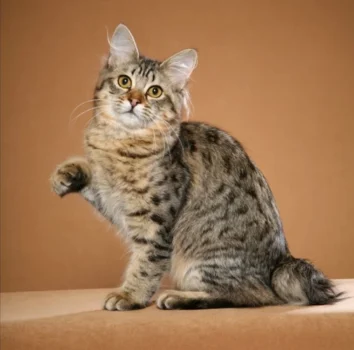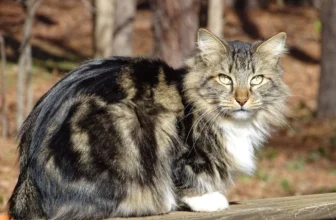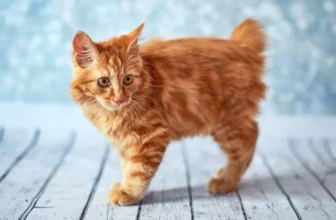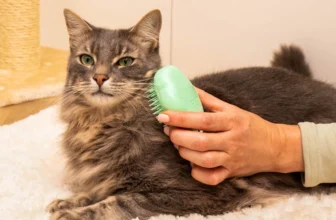Caring for your American Bobtail cat can be a daunting task, especially when it comes to trimming their nails. You may be overwhelmed with questions like, “How often should I trim their nails?” or “What if I accidentally cut the quick?” Don’t worry, because in this article, we will answer all those questions and more. Trimming your cat’s nails is essential, not only for their health and comfort, but also for protecting your furniture and skin. So, let’s get started on learning all there is to know about trimming your American Bobtail cat’s nails.
Why is it Important to Trim Your Cat’s Nails?
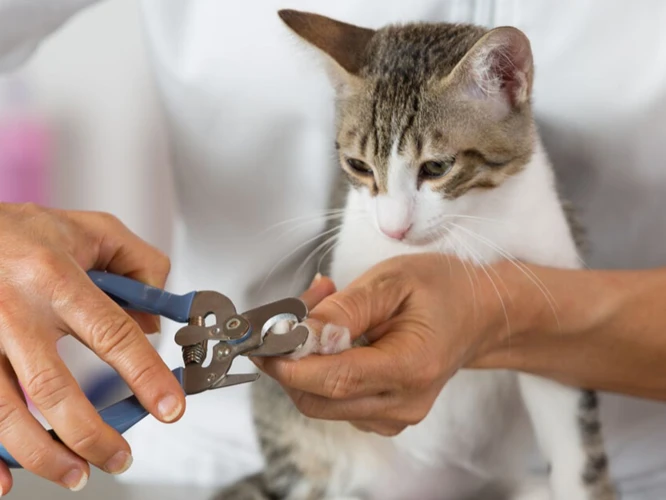
Why is it Important to Trim Your Cat’s Nails?
Trimming your cat’s nails is an essential part of maintaining their overall health and well-being. Not only does it prevent overgrowth, but it also helps prevent painful ingrown nails and protects your furniture and human skin.
Prevents Overgrowth
If left unchecked, a cat’s nails can quickly become too long, making it difficult for them to walk and even causing them pain when pressure is applied to their paws. Regular nail trimming ensures that their nails remain at a manageable length.
Prevents Painful Ingrown Nails
Overly long nails can also lead to painful ingrown nails. Ingrown nails occur when the nail grows into the paw pad, causing inflammation, infection, and pain. Regular nail trimming helps prevent this from happening and keeps your cat comfortable.
Protects Furniture and Human Skin
Cats have a natural instinct to scratch, and this behavior can often lead to damage to your furniture and even human skin. Regular nail trimming not only helps prevent damage to your home but also keeps your cat from inadvertently hurting themselves or others.
In addition to these benefits, nail trimming can also provide a bonding experience between you and your cat. Regular handling and touching of their paws can help your cat become more comfortable with being handled, making trips to the veterinarian and other necessary procedures less stressful.
Keeping your American Bobtail’s nails trimmed is an essential part of their care. Not only does it prevent overgrowth and painful ingrown nails, but it also protects your home and promotes a closer bond between you and your furry companion. To learn more about how to properly trim your American Bobtail’s nails, check out our guide on nail trimming for American Bobtail cats.
Prevents Overgrowth
It’s important to take care of your American Bobtail cat’s nails to keep them healthy and happy. One of the main reasons to trim your cat’s nails is to prevent overgrowth which can lead to a variety of issues. Overgrowth can cause your cat’s nails to grow too long, making it difficult for them to walk and causing discomfort. If left untrimmed, overgrown nails can even curve back into your cat’s paw, causing pain and possible infections. Regular nail trimming is crucial to ensure your American Bobtail cat’s optimal health and well-being. If you want to learn more about the importance of nail trimming or how often you should do it, keep reading for tips and tricks.
Prevents Painful Ingrown Nails
Ingrown nails can be a painful and uncomfortable experience for American Bobtail cats. When a cat’s nails grow too long and curve into the paw pad, it can result in discomfort and even infection. Regular nail trimming can prevent ingrown nails from occurring.
Ingrown nails can be prevented by:
| Keeping nails at a proper length | Cutting your cat’s nails every 2-4 weeks can prevent overgrowth and curling of the nail. |
| Trimming nails properly | Avoid cutting the nail too short, as this can cause bleeding and pain. Use sharp nail clippers to make clean cuts. |
| Using appropriate tools | Using poor quality or dull nail clippers can cause nails to splinter or become jagged, which can lead to ingrown nails. Invest in high-quality clippers. |
| Checking for signs of overgrowth | Regularly check your cat’s nails for signs of overgrowth, curling, or discomfort. |
If you notice signs of discomfort or infection in your American Bobtail cat’s nails, it is important to seek treatment from a veterinarian. Ingrown nails can lead to serious health problems if left untreated. Remember to always use caution when trimming your cat’s nails, and seek professional help if needed.
If you’d like to learn more about nail trimming for American Bobtail cats, check out our guide on nail trimming an American Bobtail cat.
Protects Furniture and Human Skin
Keeping your American Bobtail cat’s nails trimmed is essential not only for their health but for the well-being of your furniture and human skin. If you let your cat’s nails grow too long, they can become sharp and cause damage to your couch, chairs, and other furniture. Additionally, if you have children or other pets, long nails can lead to scratches and puncture wounds.
Furniture Protection: One of the main reasons that cat owners decide to trim their cat’s nails is to protect their furniture. A cat’s natural desire to scratch is not something that can be trained out of them, and it can be difficult to redirect this behavior. However, trimming their nails regularly can help dull them, reducing the damage that they can cause.
Human Skin Protection: Another important reason to trim your cat’s nails is to protect human skin from scratches and puncture wounds. When nails are too long, it is easy for cats to accidentally scratch their owners or other people around them. This can be especially important if you have young children, elderly individuals, or people with weakened immune systems in your home.
To prevent these potential issues, it is essential to keep your cat’s nails trimmed on a regular basis. For a step-by-step guide on how to trim your American Bobtail cat’s nails, you can read our article on nail trimming for American Bobtail cats. However, if you notice any problems with your cat’s nails, like overgrowth, pain, or infection, you should seek treatment immediately. For more information on American Bobtail nail problems and treatment, you can read our article on American Bobtail nail problems and treatment.
How Often Should You Trim Your American Bobtail Cat’s Nails?
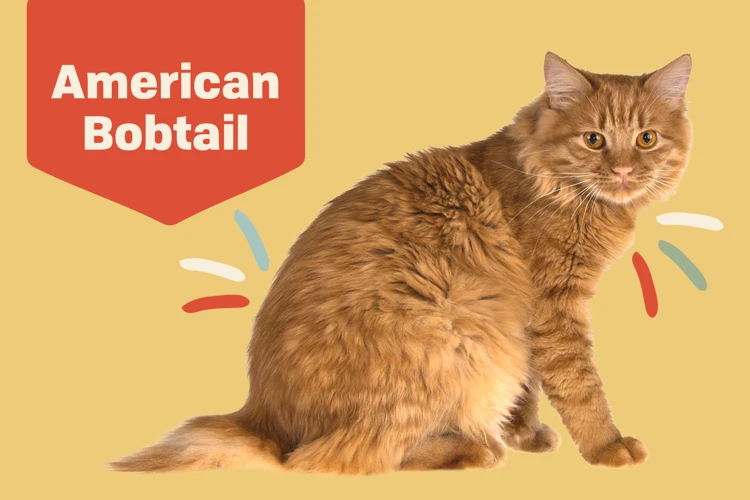
How Often Should You Trim Your American Bobtail Cat’s Nails?
Keeping your American Bobtail cat’s nails trimmed is an essential part of their overall health and hygiene. Overgrown nails can cause discomfort and even pain, leading to issues like ingrown nails or scratches on furniture and human skin. So, how often should you give your furry friend’s nails a trim?
Factors to Consider
The frequency of your cat’s nail trimming depends on several factors, including their age, activity level, and environment. Young cats’ nails grow faster than adult cats, so they may need more frequent trimming. More active cats may also need more frequent trimming as they wear down their nails less naturally.
If your cat spends most of their time indoors, you may need to trim their nails less often than an outdoor cat who climbs trees and digs in the dirt. It’s essential to examine your cat’s nails regularly and trim them when they appear too long.
Typical Schedule
In general, most American Bobtail cats need their nails trimmed every two to four weeks. However, if your cat’s nails grow exceptionally fast, you may need to do it more frequently. If your cat’s nails aren’t growing as quickly, you may be able to trim them less often – every four to six weeks.
It’s important to note that every cat is unique, and there’s no one-size-fits-all schedule for nail trimming. Pay attention to their nail growth and adjust the trimming frequency as needed.
Signs of Overgrowth
If you’re unsure of whether your cat needs a nail trim, a few signs indicate it may be time. Overgrown nails can cause discomfort, and your cat may show signs of pain when walking or moving around. You may notice that their nails start to curl or become thicker than usual. Additionally, if you hear your cat’s nails clicking on the floor, they likely need a trim.
Regular and routine nail trims help prevent these issues and keep your cat healthy and comfortable.
Additional Tips
To ensure that your American Bobtail cat’s nails stay at a healthy length, consider investing in a scratching post or pad to help file down their claws naturally. You should also reward your furry friend with treats and praise after a successful nail-trimming session to encourage good behavior.
Conclusion
Trimming your American Bobtail cat’s nails is an essential aspect of their overall health and wellness. Pay attention to their nail growth, adjust the trimming frequency as needed, and keep an eye out for signs of overgrowth to keep your cat happy and healthy.
Factors to Consider
When it comes to trimming your American Bobtail cat’s nails, there are several factors to consider. One of the most important is how frequently you should be trimming your cat’s claws. Additionally, you’ll need to think about your cat’s behavior and temperament, as well as any medical or health-related concerns that could impact their nail care. To ensure that you’re taking the best possible care of your furry friend, here are some key factors to keep in mind. For more information about the actual process of nail trimming, check out our guide on American Bobtail cat nail cutting or nail trimming for American Bobtail cats.
Typical Schedule
Maintaining a regular schedule for trimming your American Bobtail cat’s nails is important to keep their nails at a healthy length and prevent overgrowth. It’s recommended to trim your cat’s nails every 2-4 weeks to keep them in good shape. However, the exact frequency may depend on a few factors.
Activity level: Cats that are less active may require less frequent nail trimming than those with high energy levels. This is because a cat that spends more time running and jumping is likely to wear down their nails naturally.
Nail growth rate: Some cats may have a faster nail growth rate than others, which may require more frequent trimming.
Nail length: If your cat’s nails are longer than usual, you may need to trim them more frequently until you reach the desired length.
Outdoor exposure: Cats that spend time outdoors may naturally wear down their nails on rough surfaces, which may require less frequent trimming.
Overall health: Cats with certain health conditions that affect their nails, such as arthritis, may require more frequent trimming to prevent discomfort and overgrowth.
It’s important to observe your cat’s behavior and nail length to determine the best schedule for them. Regular nail trimming not only helps prevent overgrowth and painful ingrown nails, but it also protects furniture and human skin from scratches.
Signs of Overgrowth
As a responsible owner of an American Bobtail cat, it is important to know the signs of overgrown nails. Overgrown nails can cause discomfort, pain, and even infection if left untrimmed. Here are some signs/indicators that your cat’s nails may be overgrown:
| Signs of Overgrown Nails |
|---|
| Unusual clicking sound when your cat walks on hard surfaces. |
| Your cat is scratching and destroying furniture despite having a scratching post. |
| Your cat is getting easily stuck in carpets, blankets, or other fabrics. |
| Your cat is excessively biting its nails or grooming its paws. |
| The nails are visibly long and curving, making it difficult for your cat to walk. |
If you notice any of these symptoms, it may be time to trim your cat’s nails. Overgrown nails can not only be uncomfortable for your cat but can also cause damage to your furniture and even be painful for you if they scratch or accidentally puncture your skin. Keeping a regular schedule for trimming nails can also help prevent these symptoms from happening.
How to Trim Your American Bobtail Cat’s Nails?
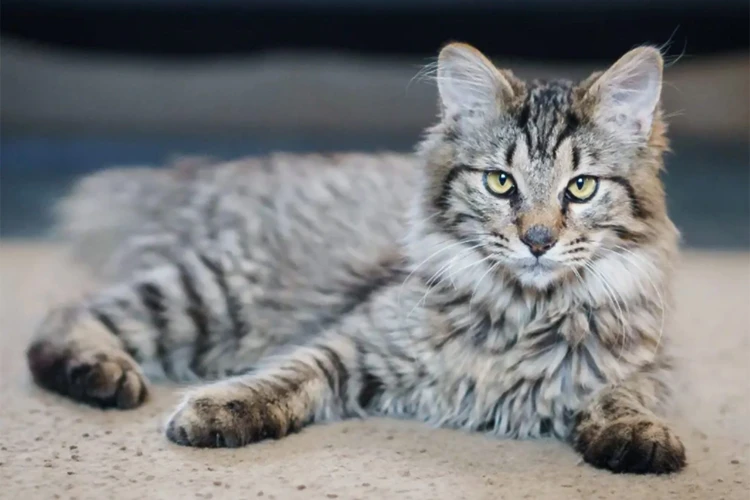
Trimming your American Bobtail cat’s nails can seem difficult, but it is actually a simple process that can be done at home. Here are the step-by-step instructions for trimming your cat’s nails:
Gather Supplies: First, you need to gather all the necessary supplies. You will need cat nail clippers, styptic powder (in case you accidentally cut the quick), and treats for your cat.
Prepare Your Cat: Once you have all the supplies, it’s time to prepare your cat for the nail trimming. Gently pet and stroke your cat, praising and reassuring them. This will help them relax and feel more comfortable with the process.
Trim the Nails: Hold your cat’s paw gently and carefully trim the tip of each nail using the nail clippers. It is important to be careful not to cut the quick, which is the pink part of the nail that contains nerve endings and blood vessels. If you accidentally cut the quick and your cat starts to bleed, apply styptic powder to stop the bleeding.
Administer Proper Praise and Treats: After each nail is trimmed, remember to praise and reward your cat with treats for their cooperation. This will help to create a positive association with the nail trimming process.
Take Frequent Breaks: If your cat is resistant to the nail trimming process or if you need to take a break, stop and try again another time. Taking frequent breaks ensures that your cat is not overwhelmed or stressed during the process.
Remember, it is important to trim your American Bobtail cat’s nails regularly to prevent overgrowth and painful ingrown nails. By following these simple steps and being patient with your cat, you can make the nail trimming process a stress-free and enjoyable experience for both you and your feline friend.
Gather Supplies
Before trimming your American Bobtail cat’s nails, make sure you have all the necessary supplies within reach. Gathering supplies can be a critical step towards ensuring that the nail trimming process is as smooth and safe as possible for both you and your furry friend. You don’t want to be halfway through the process and realize that you’re missing a crucial tool, so it’s important to gather all the supplies beforehand. Let’s take a look at some of the essential items you’ll need to trim your cat’s nails with ease.
Prepare Your Cat
Before you start trimming your American Bobtail Cat’s nails, it’s essential to prepare your furry friend so that the process is painless and anxiety-free. Preparing your cat beforehand can help reduce their stress levels, making them more likely to cooperate. Here are some steps to follow when preparing your cat for the nail trimming process:
First, choose a time when your cat is relaxed and in a good mood, for example, after they have eaten or just woken up from a nap. This will ensure that they are more cooperative and less likely to squirm.
Second, get all the necessary supplies ready, including nail clippers, styptic powder, and treats to reward your cat for good behavior.
Third, choose a comfortable and secure location where you can trim your cat’s nails. It’s best to choose a location where your cat feels safe and comfortable, like a quiet room where they usually sleep or play.
Fourth, gently hold your cat and offer some affection and praise to make them feel loved and appreciated. This can help them relax further and reduce their anxiety and fear.
Fifth, slowly and patiently introduce your cat to the nail clipper by letting them sniff it and touch it with their paws. Do not force your cat to get used to the clipper. Allow them to familiarize themselves with the clipper on their own terms.
Sixth, gently massage your cat’s paws to relax their muscles, and use a treat to create positive reinforcement for the nail trimming process.
Finally, once you’re ready to trim your cat’s nails, gently position them on their back on a flat surface or hold them in your lap while using a towel to secure them. This is to ensure that they don’t move around too much while you trim their nails.
Remember, if your cat becomes stressed or anxious during the preparation process, stop and try again at another time. Patience and positive reinforcement are key to making the nail trimming process stress-free and comfortable for both you and your cat.
Trim the Nails
When it comes to trimming your American Bobtail cat’s nails, it may seem like a daunting task at first. However, with patience and practice, it can become a routine part of their grooming process. Follow these steps to ensure a successful trim:
First, make sure you have all the necessary supplies including sharp nail clippers, styptic powder in case of accidental bleeding, and treats for positive reinforcement. It’s important to use clippers specifically designed for cat nails as human clippers can cause discomfort and even injury.
Next, find a calm and quiet environment to begin the process. It’s helpful to have a friend or family member nearby to assist in holding your cat gently while you trim their nails. If possible, start with just one paw at a time, gradually increasing the number of paws as your cat becomes more comfortable.
Step-by-step trimming process for your cat’s nails:
| Step | Description |
|---|---|
| 1 | Hold your cat’s paw gently but securely. |
| 2 | Press lightly on the paw’s pad to extend the nail. |
| 3 | Identify where the quick (the pink part of the nail containing blood vessels and nerves) begins. Avoid cutting into this area, as it can cause pain and bleeding. |
| 4 | Using sharp cat nail clippers, make a quick and clean cut just before the start of the quick. Always cut at a 45-degree angle. |
| 5 | If your cat becomes agitated or stressed, take a break and try again later or another day. |
| 6 | Continue the process on the remaining paws, always remembering to stay calm and patient. |
It’s important to take note of your cat’s reaction during the nail trimming process. If they become too tense or agitated, it’s better to take a break and try again later or another day. Be sure to give your cat plenty of praise and treats when the job is done to encourage positive reinforcement.
By following these simple steps, you can ensure a successful and stress-free nail trimming experience for both you and your American Bobtail cat.
What if Your Cat Resists Nail Trimming?
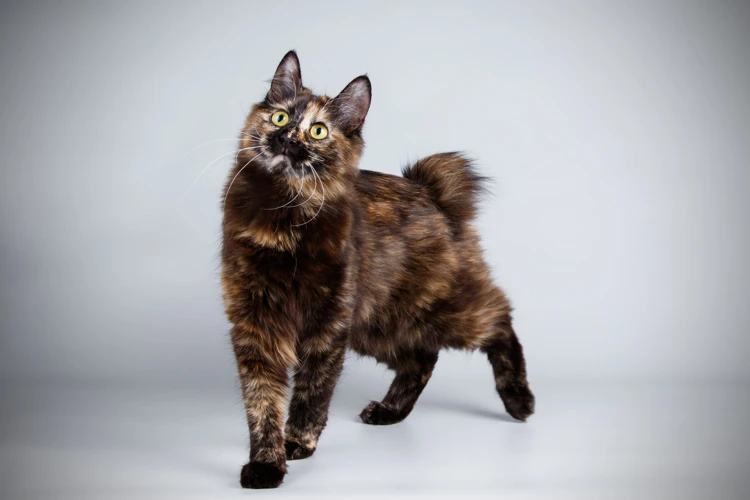
If you are facing difficulty in trimming your American Bobtail cat’s nails because it resists, do not fret. Many cats do not like their paws being handled, and it can be a challenging task to convince them to sit still while you trim their nails. Here are some tips to make the process less daunting.
Administer Proper Praise and Treats
Positive reinforcement can go a long way in encouraging your cat to cooperate. Offer your American Bobtail cat treats and praise before, during, and after the nail-trimming procedure. This will help create a positive association with the nail trimming process, making it more likely that your cat will cooperate in the future.
Take Frequent Breaks
It is important to be patient while trimming your cat’s nails. If you are struggling, it may be helpful to take frequent breaks. Start with one paw and then take a break. Allow your American Bobtail cat to get comfortable, and then proceed to the next paw. This will give your cat time to relax and feel less stressed.
However, do not take breaks for too long, as it may cause your cat to become disinterested or forget the task at hand. Instead, keep the breaks short and gradually increase the time as your cat becomes more comfortable with the process.
Remember, it’s important to be gentle and patient while handling your cat’s paws. Avoid holding them too tightly or forcefully, as it may make your cat uncomfortable or even painful.
Dealing with a cat that resists nail trimming can be overwhelming, but it’s important not to lose hope. With proper reinforcement, patience, and care, you can successfully trim your American Bobtail cat’s nails without any stress.
Administer Proper Praise and Treats
When it comes to trimming your American Bobtail cat’s nails, your furry friend might not be too thrilled about the process. Some cats can be resistant or even fearful of it. That’s why it’s important to have a positive attitude and a few tricks up your sleeve. One of those tricks is administering proper praise and treats during and after the nail-trimming process. In this way, you can create a more comfortable experience for your cat, making it easier for you to trim their nails in the future. Here are some helpful tips for handling your furry friend during a nail trim.
Take Frequent Breaks
Trimming your American Bobtail cat’s nails can be a stressful experience, especially if your cat resists the process. One way to help alleviate the stress, for both you and your cat, is to take frequent breaks during the trimming process. This will allow your cat to relax, and give you time to regroup before continuing. Here are some ways to take frequent breaks during nail trimming:
- Pay attention to your cat: Cats can become easily stressed during nail trimming. Pay attention to your cat’s body language and behavior, and look for signs of stress such as panting, hissing, or scratching. If you see these signs, it may be time for a break.
- Use play as a break: Playtime is a great way to help your cat relax and relieve stress during the nail trimming process. After trimming a few nails, play with your cat for a few minutes to help them relax.
- Take a timeout: If you or your cat are feeling overwhelmed, it’s okay to take a timeout. Put down the clippers and walk away for a few minutes. Use this time to take some deep breaths, stretch, or even have a snack.
- Offer treats and praise: Positive reinforcement can go a long way in reducing stress during nail trimming. Offer your cat a treat and praise them for good behavior to help them relax.
- Break it up: If your cat is particularly resistant to nail trimming, it may be best to break the process up over several sessions. While it’s important to trim all your cat’s nails in one sitting, it’s okay to take a break and come back to it later.
Remember, taking frequent breaks during the nail trimming process not only helps your cat relax, but also helps to make the process less stressful for you as well. When both you and your cat are calm and relaxed, nail trimming is a much smoother experience.
What if You Accidentally Cut the Quick?
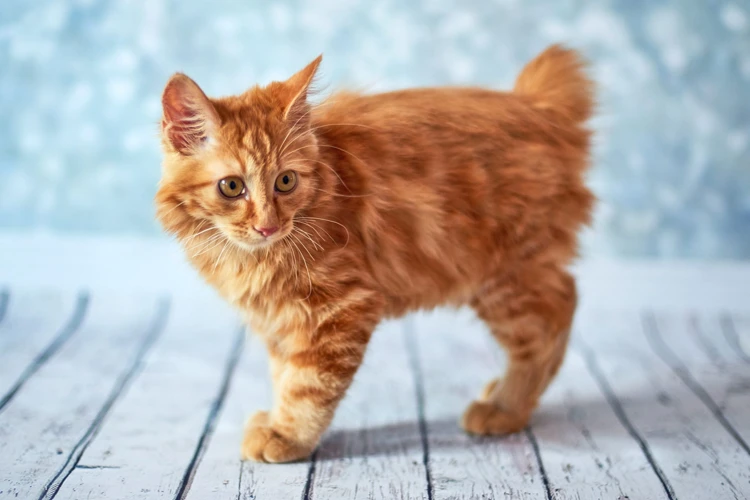
While trimming your American Bobtail cat’s nails, it’s crucial to avoid cutting the quick, which is the blood vessel and nerve inside the nail. However, accidents may happen, and you might end up cutting the quick. If this happens, don’t panic, stay calm, and follow these steps:
Apply Pressure with Styptic Powder: Cutting the quick can cause bleeding and a lot of discomfort to your cat. The first step is to apply gentle pressure on the affected nail with a clean cloth or tissue. Then, apply a small amount of styptic powder to the nail tip. Styptic powder is a substance that helps stop bleeding by constricting the blood vessels. If you don’t have styptic powder, you can use cornstarch or baking soda as an alternative.
Offer Your Cat Treats and Affection: After you have applied the styptic powder, you should reward your cat with plenty of treats and affection. This will help to alleviate the stress and discomfort caused by the bleeding. You can give your cat his favorite treats, like pieces of cooked chicken or canned tuna.
It’s important to note that cutting the quick can be painful and unpleasant for your cat. Try to prevent this from happening by using high-quality clippers and being careful while trimming the nails. If you are unsure about how to trim your cat’s nails properly or if your cat is highly resistant to nail trimming, it’s best to take your cat to a professional groomer or consult your veterinarian.
Apply Pressure with Styptic Powder
We all hope to avoid it, but sometimes accidents happen, and you may accidentally cut your American Bobtail cat’s nails too short, leading to bleeding. Don’t panic; it’s a common occurrence among pet owners who trim their cat’s nails at home. In such cases, it’s essential to have the right tools on hand, such as styptic powder. This fine, dry powder works by cutting the bleeding and making the area clot rapidly, allowing your cat to heal quickly. However, it’s essential to know how to use styptic powder properly to avoid causing more harm than good. Let’s look at the steps you can take to apply pressure with styptic powder effectively.
Offer Your Cat Treats and Affection
One of the worst things you can do when accidentally cutting your American Bobtail cat’s quick is to panic. Doing so may cause your cat to get nervous and anxious, which can make matters worse. Instead, administer pressure on the affected area with styptic powder to stop the bleeding. Afterward, offer your cat some treats and affection to help calm them down and associate nail trimming with positivity.
Here are some tips for offering your cat treats and affection after accidentally cutting the quick:
| Tip | Description |
|---|---|
| Be Calm | Take a deep breath and remain calm. Your cat can sense your anxiety, which can make them more nervous and agitated. |
| Offer Treats | Offer your cat their favorite treats to help distract them from the discomfort caused by accidentally cutting the quick. |
| Provide Affection | Pet your cat and talk to them gently to help reassure them that everything is ok. This can help your cat feel more comfortable and less anxious. |
| End on a Positive Note | End the nail trimming session with a positive experience by praising your cat and offering them more treats and affection. This will help your cat associate nail trimming with a positive experience. |
By following these tips, you can help your American Bobtail cat feel more comfortable and relaxed during the nail trimming process. Remember, nail trimming is an essential part of maintaining your cat’s overall health and happiness, so try not to feel overwhelmed if accidents happen, and focus on creating positive associations with the process.
What if You Can’t Trim Your Cat’s Nails Yourself?
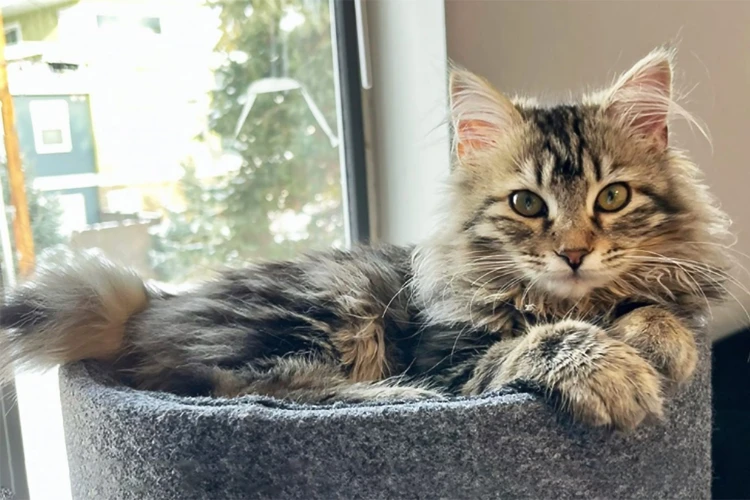
If you’re unable to trim your American Bobtail cat’s nails yourself, don’t worry there are other options available. Taking your cat to a professional groomer or your veterinarian are both viable options if you are unable to do it yourself.
Go to a Professional Groomer
If you’re unsure about how to trim your American Bobtail cat’s nails properly, taking them to a professional groomer can be a great choice. Professional groomers have the experience and expertise to properly trim your cat’s nails. They also have specialized tools that will make the process efficient and less stressful for you and your cat. The cost of taking your cat to a groomer depends on where you live and the specific services offered, but it is typically an affordable option.
Consult Your Veterinarian
If your American Bobtail cat has particularly difficult nails to trim or if you are worried about trimming them yourself, consult your veterinarian. Veterinarians are trained professionals who can provide guidance and assistance in trimming your cat’s nails. They can also provide valuable advice on how to make the process less stressful for your cat. Although the cost of a veterinary visit may be higher than a grooming visit, a veterinarian can provide additional benefits such as a general check-up and preventative care, which make it a worthwhile investment.
Remember, keeping your American Bobtail cat’s nails trimmed is essential for their health and well-being. If you are unable to do it yourself, don’t hesitate to take your cat to a professional groomer or your veterinarian to have it done.
Go to a Professional Groomer
If you find yourself struggling to trim your American Bobtail cat’s nails on your own, it may be time to seek the help of a professional groomer. While there are many benefits to trimming your cat’s nails at home, sometimes it can be a difficult and stressful process for both you and your cat. Going to a professional groomer can provide a safe and stress-free environment for your cat to get their nails trimmed. Keep reading to learn more about when it might be time to seek out professional help and how to find a trusted groomer in your area.
Consult Your Veterinarian
If you find yourself unable to trim your American Bobtail cat’s nails, it is best to consult your veterinarian for assistance. They have the necessary training and expertise to handle such situations and will be more equipped to deal with any complications that may arise during the trimming process.
Here are some reasons why you should take your cat to the veterinarian for nail trimming:
- Difficulty restraining your cat: If your cat resists nail trimming or becomes aggressive during the process, it can be difficult and potentially dangerous to restrain them on your own. Your veterinarian has the proper equipment and knowledge to restrain your cat safely and securely.
- Unusual nail growth: If you notice any abnormal nail growth or changes in your cat’s nail color or texture, it is important to have them examined by a veterinarian. These could be signs of an underlying medical condition that requires treatment.
- Previous injuries: If your cat has previous injuries or medical conditions affecting their paws, it is best to consult with a veterinarian who can examine them properly and determine the best course of action for trimming their nails.
- Expertise and experience: Veterinarians have extensive training and experience in handling cats and can trim their nails quickly and effectively. They are also equipped to handle any complications that may arise during the process.
It is important to note that while some veterinary clinics may charge a fee for nail trimming services, it is worth the investment to ensure the health and wellbeing of your furry friend. In some cases, nail trimming may be covered under your pet insurance plan, so be sure to check with your provider.
Remember, regular nail trimming is an essential part of your American Bobtail cat’s grooming routine. If you are unable to do it yourself, don’t hesitate to seek assistance from your veterinarian.
Additional Tips
Taking care of your American Bobtail cat’s nails involves more than just trimming them regularly. Here are some additional tips to keep in mind:
Start Early: Get your cat used to having their paws handled when they are young. This will make the nail trimming process easier for both you and your cat.
Use Positive Reinforcement: While trimming your cat’s nails, offer them treats and affection to create a positive association with the process. This will make it less stressful for your cat and help them cooperate during future nail trimming sessions.
Trim Regularly: Make sure to trim your cat’s nails on a regular basis to keep them at a healthy length. This will also help prevent ingrown nails and other nail-related health issues.
Provide Scratching Posts: To prevent your cat from scratching furniture, make sure to provide them with appropriate scratching posts. This will also help them naturally wear down their nails.
Inspect Your Cat’s Nails: Whenever you groom your cat, take a moment to inspect their nails. Look for signs of overgrowth or any other abnormalities.
By following these additional tips, you can ensure that your American Bobtail cat’s nails are healthy and well-maintained. With patience and positive reinforcement, you can make the nail trimming process a stress-free experience for both you and your feline friend.
Start Early
One of the best ways to ensure nail trimming is a stress-free experience for your American Bobtail cat is to start early. Early introduction is crucial in making nail trimming a regular part of your cat’s grooming routine. Introducing your cat to nail trimming as a kitten will help them become more comfortable with the process over time. But how do you start? Let’s take a look at some simple yet effective tips for introducing nail trimming to your American Bobtail cat.
Use Positive Reinforcement
Positive reinforcement is a highly effective way to encourage good behavior in your American Bobtail cat during nail trimming. Here are some tips to incorporate positive reinforcement into your nail trimming routine:
- Reward good behavior: Whenever your cat behaves well during the nail trimming process, reward them with treats, affection or playtime. This can help them associate nail trimming with positive experiences and make them more likely to cooperate next time.
- Use treats: Offering your American Bobtail cat some of their favorite treats before or during the nail trimming process can help keep them calm and make the experience more enjoyable for them.
- Don’t punish: Avoid using punishment for bad behavior during nail trimming. This can cause your cat to become stressed or anxious and may make future nail trimming sessions more difficult.
- Be patient: Cats can sense when their owners are feeling anxious or frustrated. Remain patient and calm during the nail trimming process to create a relaxing and positive environment for your American Bobtail cat.
- Provide a comfortable environment: Make sure your cat is comfortable and relaxed during the nail trimming session. Use a cozy blanket or bed and dim the lights to help create a calming atmosphere.
- Use toys: Offering your American Bobtail cat some toys to play with during nail trimming can help distract them and make the experience more enjoyable.
Remember, the key to successful nail trimming with positive reinforcement is to keep the experience as relaxed and enjoyable as possible for your cat. With patience and persistence, you can help your American Bobtail cat become more comfortable with nail trimming over time.
Trim Regulary
As mentioned earlier, it’s important to trim your American Bobtail cat’s nails regularly to prevent overgrowth, painful ingrown nails, and damage to furniture and human skin. But how often is regular enough and what happens when you neglect nail trimming?
Trimming Frequency
The frequency with which you should trim your cat’s nails depends on various factors, such as age, lifestyle, and nail growth rate. Generally, it’s recommended to trim your cat’s nails every 2-4 weeks. Kittens and senior cats may require more frequent trimming, while cats that spend most of their time outdoors or on rough surfaces may need less frequent trimming as their nails naturally wear down.
To ensure you don’t forget to trim your cat’s nails regularly, it’s a good idea to set reminders or schedule nail trimming sessions in your calendar. You can also make it a part of your grooming routine and bond with your cat in the process.
The Consequences of Neglecting Nail Trimming
Neglecting nail trimming can have several negative consequences for your cat and your home. Overgrown nails can cause discomfort and pain, limit your cat’s mobility, and increase the risk of nail injuries and infections. When your cat’s nails are too long, they may also get snagged on carpets or furniture, resulting in damage and scratches.
When your cat’s nails are too long, they are more likely to leave marks on your skin when they scratch or play. This can be particularly problematic if you have young children or visitors who are allergic to cats. Regular nail trimming helps prevent such incidents and makes for a happier cat-human relationship.
To summarize, regular nail trimming is crucial for your American Bobtail cat’s health, comfort, and behavior. By following the tips and techniques outlined in this article, you can ensure your cat’s nails are trimmed to the right length at the right frequency.
Conclusion
In conclusion, keeping your American Bobtail cat’s nails trimmed is a crucial aspect of responsible pet ownership. Neglecting this important grooming practice can lead to overgrowth, painful ingrown nails, and destruction of furniture or skin.
By determining a proper trimming schedule and following the recommended technique, you can make this process stress-free for both you and your furry friend. Remember to use positive reinforcement and administer praise and treats when necessary to make your cat feel more comfortable.
In the rare event that you accidentally cut the quick, don’t panic. Simply apply pressure with styptic powder and offer your cat some love and attention. If trimming your cat’s nails is too difficult to do on your own, don’t hesitate to seek professional help.
Overall, by utilizing the tips and techniques offered in this article, you can ensure your American Bobtail cat feels their best while also protecting your home and loved ones. Always keep in mind that every cat is unique and may require a tailored approach to their grooming needs. With patience and practice, you can become a pro at trimming your cat’s nails and enjoy a happy and healthy bond with your furry friend.
Frequently Asked Questions
What happens if I don’t trim my American Bobtail cat’s nails?
If you don’t trim your cat’s nails, they can grow too long and cause pain or even curve back into the paw pad. Additionally, long nails can damage furniture or hurt humans during play.
What if my cat is afraid of nail trimming?
If your cat is afraid of nail trimming, it’s a good idea to use positive reinforcement by offering treats and praise. Also, take frequent breaks during the trimming process.
How do I know if I accidentally cut the quick while trimming?
If you accidentally cut the quick while trimming your cat’s nails, you will notice bleeding. Apply pressure with styptic powder and offer treats and affection to soothe your cat.
Can I use human nail clippers on my cat?
No, it’s not recommended to use human nail clippers on your cat. Instead, use clippers specifically designed for cats.
What kind of treats should I give my cat during nail trimming?
It’s best to use soft treats that can be easily consumed, such as tuna or small pieces of chicken. Avoid giving too many treats at once, as it can lead to an upset stomach.
How can I prevent my cat from scratching furniture?
You can prevent your cat from scratching furniture by providing them with a scratching post or pad. Also, regularly trimming their nails can help reduce the damage caused by scratching.
Can I train my cat to accept nail trimming?
Yes, with patience and positive reinforcement, you can train your cat to accept nail trimming. Start by touching their paws regularly and rewarding them with treats and praise.
Do I need to trim my indoor cat’s nails?
Yes, even indoor cats need their nails trimmed. Regular trimming can help prevent overgrowth and ingrown nails, as well as protect your furniture and skin.
Can I use a nail file instead of clippers on my cat?
While it’s possible to use a nail file on a cat’s nails, it can be time-consuming and difficult to get the desired results. It’s generally easier and quicker to use clippers designed for cats.
How can I tell if my cat’s nails need to be trimmed?
You can tell if your cat’s nails need to be trimmed if they are curling or clicking on the floor when your cat walks. Additionally, if your cat’s nails are damaging furniture or causing pain, it’s time for a trim.

